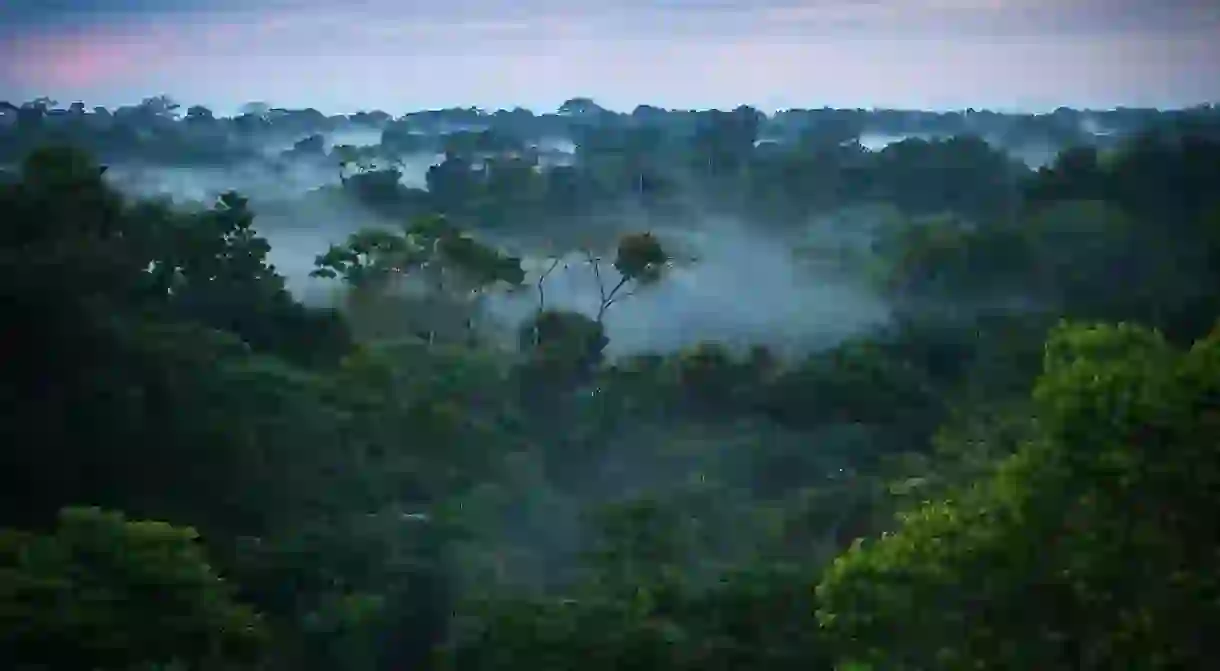How Drones Will Help the Brazilian Amazon Rainforest

Despite heavy deforestation, the Amazon rainforest is vast. Scientists have searched for an effective way to calculate the degree of human impact on the world’s largest tropical jungle while minimizing potential criminal activity. The solution? Combining technology and conservation by using drones.
Drones can help survey remote corners of the Brazilian Amazon forest that people can’t easily reach to monitor it far more efficiently. They’re being tested as a way to improve surveillance options in the Amazon rainforest and could be the best solution so far for monitoring the vast areas of land.
Equipped with high-resolution cameras with infrared technology, the drones can pick up images in real time at any time of day, allowing researchers to avoid sending teams of workers through dense and remote parts of the forest. This also allows for easier and more accurate calculations in regards to the size of areas of deforestation, which is currently estimated manually. The multi-functional cameras come with sensors that can map out pieces of land in the forest, such as areas where the trees have been cut down.

Drones can also be used to detect criminal activity and illegal logging. At the moment, the location of criminal bases is verified either by teams of agents or by aircraft, which presents several problems in regard to the agents’ safety and the noise of the planes unwittingly alerting the criminals to their presence. The quiet drone overcomes that issue and also ensures agents are kept out of potential danger.
The drone project is being led by coordinator André Alamino at the Inspection Coordination (COFIS) of the Chico Mendes Institute for Biodiversity Conservation (ICMBio). The institute is currently preparing the drones for the test phase and considering in which ways the drones can play a part in conservation management. Once the internal regulations have been approved, the drones will be ready to use in 2019.

The Amazon rainforest endures daily destruction that threatens its existence as well as the wildlife that lives there. One of the main problems is deforestation, which reduces biodiversity, impacts on climate change, destroys habitat, and breaks up indigenous communities. The most common reason for deforestation is to create more room for agriculture, especially for beef and soybean. Development projects, such as hydroelectric dams and highways, also threaten huge areas of the jungle, especially when local laws become weaker in times of political turmoil. Additionally, changes in climate temperatures encourage more wildfires. And areas in the jungle where there’s mahogany and gold are often subjected to both legal and illegal exploitation.
Centralized programs are working to change this and there are several projects and organizations working to preserve the forest. The Amazon Region Protected Areas (ARPA) program is hoped to be running by 2020 and will conserve an area of the forest the size of Portugal and Spain combined. If the test phase for the drones in 2019 is a success, they may help to play a crucial part in making this program work.

The use of drones in conservation has been successful in other projects in Brazil, including monitoring trails and tracks in national parks, mapping out dam damage, and detecting areas destroyed by wildfires. The drones that will be used in the Amazon will need to be controlled by specifically trained pilots – the cost of one is around R$50,000 (US$13,200).
Drone-usage is one way to help protect the Brazilian Amazon rainforest. Another way to help protect South America’s jungle is to promote ecotourism, which boosts the economy and encourages locals to engage in tourism practices for an income instead of activities that cause harm to the forest. Although responsible tourism in the Amazon is still a fledgling market, it’s slowly growing with activities such as group tours to search for river dolphins growing in popularity and helping conservation efforts at the same time.













